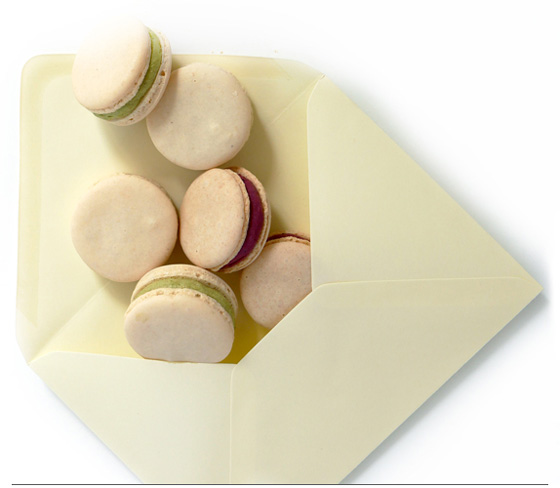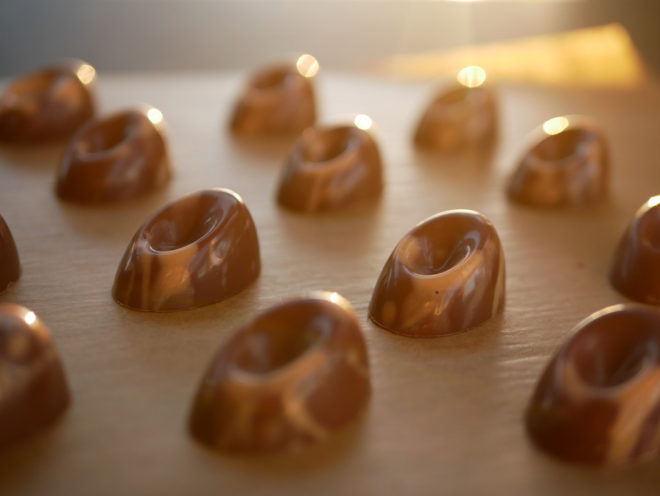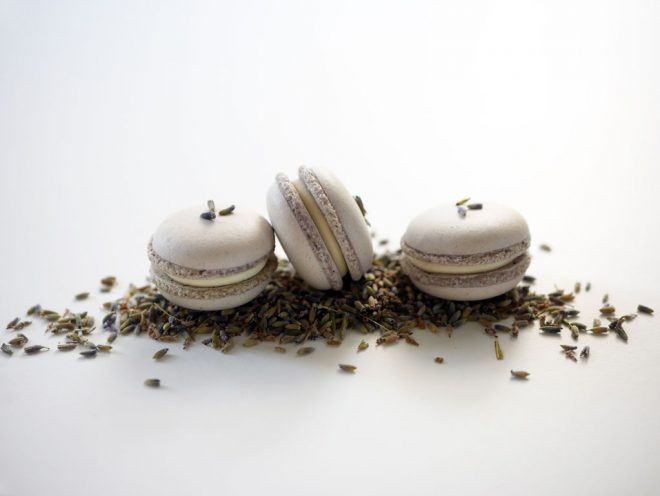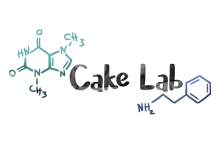Chestnut Crembo
Crembo season is here. I’m not sure what’s more exciting, the smell of the first rain or the bite from the first crembo, a classic local treat. When I eat a crembo, I personally like to start from the top and when I reach the cookie, I eat it too. Sometimes I feel like peeling all the chocolate off and eat the meringue separately. Indeed, there are many ways to eat a crembo, but why crembo in a pita is one of them I will never understand.
As a kid, during school days, I feared this little chunk of cream. Every time one of my classmates celebrated a birthday, we would all gather and buy as many crembos as our allowance would allow. When the birthday boy or girl arrived to school, we would blast them with crembos from every direction, until they became one big sticky mess.
But fear no more, we grew up since then, and so did this crembo. To get a more mature taste, I added chestnuts in the meringue and in the cookie. Although real crembo has a chocolate coating (hence its name, crem = cream + bo = inside, cream inside the coating), the chocolate coating kinda steals the show from the chestnuts. For those who really want to feel the chestnuts’ full power, I would suggest not to coat the chestnut crembo. Just leave it naked and enjoy the chestnuts. However, if you’re in the mood for something more tart, check out this lemon crembo.
* The recipe makes about 20 chestnut crembos.






Ingredients
Gelatin mass
3 g gelatin powder
15 g water
Cookie
100 g peeled and roasted chestnuts
200 g flour
100 g powdered sugar
80 g cold butter (cut into cubes)
40 g egg yolk
Pinch of salt
Italian meringue
75 g water
200 g sugar
75 g egg whites
18 g gelatin mass
50 g peeled and roasted chestnuts
Coating
200 g dark chocolate
1 tbsp vegetable oil
5 g peeled and roasted chopped chestnuts
Equipment
Round cookie cutter, 5.5 cm diameter
A pastry bag fitted with a 16 mm smooth tip
Gelatin mass
Sprinkle gelatin powder over the water, mix well and keep in the fridge for at least half an hour. Cut into small pieces before use.
Cookie
In a food processor, grind chestnuts to a powder. Keep aside.
Put flour, powdered sugar, salt and butter cubes in the mixer bowl and keep in the fridge for about 10 minutes. Remove from fridge. Using the paddle attachment, start mixing at low-medium speed until the batter reaches sand-like consistency. Make sure the butter chunks are as small as possible at the end of the process without melting the butter. Add the ground chestnuts and mix just until uniform.
Add the egg yolk all at once and keep mixing at medium speed until the dough starts to form but is not yet completely uniform. Remove dough parts from the bowl and combine together. Cover dough with plastic wrap. Roll out the dough a little bit. Keep in the fridge for at least an hour.
When the dough is stiff and cold, remove the plastic wrap. In a cool room, flour the work surface, place the dough on top and dust it with flour as well. Roll out the dough with a rolling pin. Keep turning the dough throughout and make sure it doesn’t stick to the surface. Roll out the dough to a 3-4 mm thickness.
Please note (!) If at any point the dough starts to soften, put it back in the fridge until it is stiff again.
Using a 5.5 cm round cookie cutter, cut out circles from the dough and place them on a baking tray lined with parchment paper, each circle 2 cm apart (they don’t expand much during baking).
Keep in the freezer for about 10 minutes and preheat the oven to 170 ºC (340 ºF) in the meantime.
Remove the cookies from the freezer and transfer them to another baking tray. Place the tray in the oven and bake for about 10-12 minutes or until the edges begin to brown. Remove from oven and cool at room temperature.
Italian meringue
Put water and then sugar in a saucepan. Place on medium heat. Stir the sugar with a spatula to dissolve it. Once the water starts to boil, stop stirring and remove the spatula. Let the syrup boil and check with a thermometer that the temperature does not exceed 115°C (240°F).
While it’s boiling, melt the gelatin mass on a double boiler and whip the egg whites in a mixer on medium speed. When the syrup reaches 105°C (220°F), increase the speed of the mixer so the egg whites get to soft peaks (white foam consistency).
As soon as the syrup reaches 115°C (240°F), turn off the stove, reduce the mixer speed to medium, and slowly pour the syrup into the mixer. Add melted gelatin. Increase the mixer speed to maximum speed and continue to whip until the meringue cools and looks stable enough to be piped. (It takes about 15 minute. The addition of gelatin extends the whipping time).
In the meantime, grind the chestnuts in a food processor in short pulses until you get coarse chunks of chestnuts. When the meringue it ready, add half the amount of the chestnuts to the meringue and fold with a spatula (just about 3 folds). Add the rest of the chestnuts and fold a little bit more until uniform. (Just a few folds are enough. The more you fold, the more you risk getting a sad little puddle instead of a crembo).
Fit a pastry bag with a 16 mm smooth tip and fill it with the meringue. Holding the pastry bag vertically, pipe the meringue in the center of each cookie to form 3 layers of meringue. (You can also pipe it in a spiral)
Keep in the freezer for about half an hour before coating.
Coating
Melt chocolate on a double boiler. Add vegetable oil and mix. Let it cool for just a little bit. Transfer the melted chocolate to a narrow cup. Dip each chestnut crembo in the chocolate. Let the excess chocolate drip back into the cup and set the chestnut crembo on a cooling rack. Sprinkle some chopped chestnuts on the crembo before the coating sets.
Keep this chestnut crembo in the fridge in an airtight container for about 2 days (or even more in the freezer, just let it thaw a little before you eat it).

Tags In
Related Posts
Leave a reply:Cancel reply

Search the blog
![]()
Get updates by email

![]()












